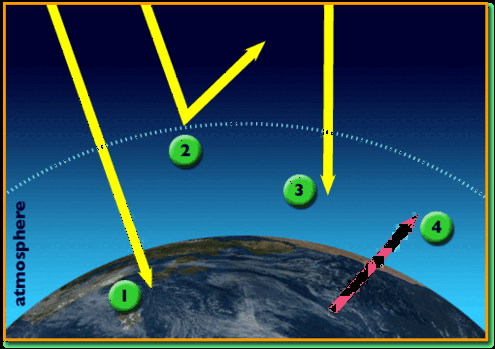
The atmosphere allows about half of the Sun's heat energy (50%) to reach Earth's surface.

About a third of the Sun's energy (30%) is reflected back into space.

The rest of the Sun's energy (20%) is absorbed by greenhouse gases in the atmosphere, like carbon dioxide, water vapor, and methane.

Greenhouse gases in the atmosphere also absorb and hold some of the heat energy radiating back from Earth's surface.

This process has been happening for billions of years. After all, greenhouse gases occur naturally in the atmosphere. But in recent history, human activity is throwing off the balance of greenhouse gases. To get energy or electricity, we burn fossil fuels like coal, oil, and natural gas. This releases carbon dioxide and other greenhouses gases into the atmosphere. The more greenhouses gases we put into the atmosphere, the more heat they absorb—and the warmer our Earth becomes. This is called climate change .




 Biodiversity
Biodiversity
 Brain
Brain
 Genetics
Genetics
 Marine BiOLogy
Marine BiOLogy
 MicrobiOLogy
MicrobiOLogy
 PaleontOLogy
PaleontOLogy
 ZoOLogy
ZoOLogy
 AnthropOLogy
AnthropOLogy
 ArchaeOLogy
ArchaeOLogy
 Astronomy
Astronomy
 Climate Change
Climate Change
 Earth
Earth
 Physics
Physics
 Water
Water

